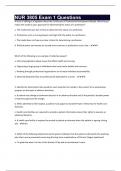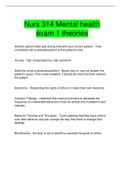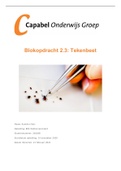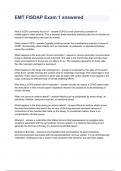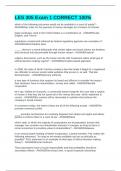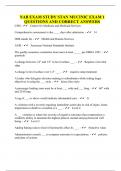How does increasing the concentration of the competitive alpha-amylase inhibitor of Phaseolus vulgaris (0.06, 0.13, 0.20, 0.27, 0.34g/cm³)
(±0.05g/cm³), affect the rate at which amylase is able to hydrolyze starch into maltose within a 5 minute time period, measured by the
absorption of blue light at 470nm with a colorimeter (±0.001Au), using iodine to test for the presence of starch?
Background Information
Within my family, there has been a history of health problems associated with Type 2 diabetes. Specifically, my aunt has been diagnosed with
Type 2 diabetes, and has suffered from this disease for many years. Due to this, I have always wondered how diabetes affects her glucose
levels because of the inability that her body has to utilize insulin properly. I have asked her about how this has affected the foods which she is
able to eat, and she has told me that she has to either avoid or eat foods in moderation that are high in starch, because of how this will increase
her body’s glucose and maltose levels. As of now my aunt is taking the medication acarbose, which works to inhibit the breakdown of starch
to aid in regulating her glucose levels from rising, however it does come along with many side effects for her. Due to the side effects that not
only affect my aunt, but also other individuals who may be taking acarbose, I have decided to investigate another, more natural inhibitor,
which is present in Phaseolus vulgaris. I will look into how increasing the concentration of P. vulgaris, referred to as white bean extract
tablets, affects the rate in which the enzyme amylase is able to hydrolyze starch into maltose. This will help me to examine if white bean
tablets are a better alternative to regulate starch levels for individuals who suffer from diabetes.
Alpha amylase is a biological catalyst which is classified as an enzyme, and functions as a digestive enzyme to catalyze the hydrolysis
reaction of starch into maltose and glucose (ScienceDirect). Enzymes have the ability to increase the rate of chemical reactions through the
use of a substrate and active site, to create products. The functions of enzymes during a
catalysis reaction have been exemplified within the Induced Fit Model (Newman), where
the cleft on the enzyme, known as the active site, slightly alters its shape to correctly
align and interact with the substrate. Once a successful collision occurs, the substrate
binds with the enzyme, to create an enzyme-substrate complex. Within this temporary
formation, interaction occurs between the R groups in the amino acids in the enzyme and
the substrate, which causes the substrate to break down into products. Enzymes are then
recycled and unchanged once the products have left the active site, to continue catalyzing
reactions. In this case, this process applies to α-amylase which is often found in saliva as
it is a digestive enzyme. α-Amylases work to break apart the 1 to 4 linkages of glycosidic
bonds within the starch form of amylose, to yield the disaccharide maltose, from the end
of linkages (Figure 1) through a catabolic reaction.
However, α-amylase activity can also be inhibited preventing the breakdown of amylose.
Influencing factors such as pH and temperature can lead to denaturation of α-amylase, as
well as substrate concentration that can also lead to enzyme activity to plateau. However, by
using the competitive inhibitor of white bean extract, this implements hindrance to the
active site so that the substrate of starch is required to compete with the white bean extract
to bind to the α-amylase active site (Newman). Thus, this slows down the hydrolysis
reaction between the α-amylase and starch because the substrate is in competition with the
white bean extract inhibitor (Figure 2). The isoforms present in white bean extract, which
are known as alpha- AI1, alpha-A12 and alpha-A1, have been suggested to highly inhibit
action of α-amylase (Barett). Due to this, it has been commonly known to have benefits to controlling glucose levels in diabetics. Therefore,
by increasing the concentration of the white bean extract tablets, this will likely demonstrate an inability for starch to hydrolyze during
catalysis because of the larger inhibitory effects amylase is competing with. The effect of an increase in concentration of white bean extract
will be quantitatively measured through the use of a colorimeter, to measure the absorbance of blue light in the starch-iodine complex as an
indicator of the amount present post catalysis. By adding iodine into the starch solution to indirectly measure the light absorbance in
starch-iodine complex, this produces a dark-blue color. This occurs as a result of amylose found within starch, where the iodine reagent
interacts with the amylose coil in order to produce the dark-blue color, hence detecting the presence of starch (Libretexts). The use of
background information in my experiment provides it with a purpose, and helped me to generate a focused research question and hypothesis.
Moreover, in my investigation I will examine the presence of starch using a colorimeter, as well as iodine and will manipulate the
concentration of white bean extract added to the starch and amylase solution.
1
, Hypothesis & Null Hypothesis
Hypothesis: I predict that as the concentration of the competitive inhibitor, P. vulgaris, of alpha-amylase increases from 0.06 to 0.34g/cm³,
the absorbance of light from the starch-iodine complex will increase where the rate in which amylase is able to hydrolyze starch into maltose
will decrease due to the inhibition that will take place, therefore indicating a higher amount of starch. This is due to the fact that white kidney
bean extract is a competitive alpha-amylase inhibitor which leads to a depletion in amylase activity by intervening with the hydrolysis
reaction of starch into maltose (Science Direct). Where competitive inhibition incorporates a molecule other than the substrate of starch to
bind to the active site of amylase, and prevent the hydrolysis reaction to occur, this will prevent the likeliness of starch being able to bind to
the active site because of the inhibition caused from the increase in bean extract. Moreover, as the inhibitor of white kidney bean extract is in
competition with the starch for the active site on α-amylase, I predict that increasing the concentration of the inhibitor will increase the effects
of inhibition, and therefore reduce the ability for amylase to hydrolyze the starch to maltose as it is unable to bind to the active site of
amylase.
Null hypothesis: I predict that as the concentration of the competitive alpha-amylase inhibitor of P. vulgaris extract tablets increases from
0.06 to 0.34g/cm³, there will be no significant difference in the absorbance measured and therefore the amount of starch present from the
hydrolysis reaction.
Variables
Independent Variable - The concentration of the competitive alpha-amylase inhibitor of white bean extract tablets (0.06, 0.13, 0.20, 0.27,
0.34g/cm³)
By incorporating a variety of concentrations that were each tested five times, this allows for the data to display any trends in an increase or
decrease of the amount of starch present after hydrolysis, along with answering the research question accurately in the experiment. This range
of concentrations has been chosen as of the preliminary research I conducted and in accordance to the concentration calculations depicted in
the method.
Dependent Variable - The amount of starch present after the hydrolysis reaction, measured by the absorption of blue light at 470nm with a
colorimeter (±0.001Au), using iodine to test for presence of starch
Controlled Variables
Variable How should it be controlled? Why should it be controlled?
Volume and This volume will be measured by using a The volume and concentration of the starch must be kept controlled throughout
concentration 10cm³ measuring cylinder (±0.2 cm³) , and the experiment because starch plays a key role in the enzyme reaction, and the
of starch ensuring that the solution is kept to 4cm³ production of maltose. As starch is the substrate within the amylase-catalyzed
solution (1%) of starch solution per trial. The reaction, if the volume and concentration of the starch solution is altered
concentration will be kept controlled by between the trials, this would consequently lead to inaccurate results as this
using 1% starch solution from lab variable would be manipulated when the independent variable of concentration
technicians. of the inhibitor already is. Therefore, it is very important to keep the volume
and concentration controlled to accurately view how the inhibitor affects starch
and its ability to hydrolyze into maltose.
Volume of The volume of alpha-amylase (1%) will It is highly important to control the volume and concentration of
alpha amylase be kept consistent throughout each trial alpha-amylase as enzymes are biological catalysts, which therefore increases
(1%) and test done, where 5cm³ of the rate of a chemical reaction. As the enzyme volume and/or concentration
alpha-amylase will be used per trial of increases, the maximum reaction rate greatly increases as well (TIEM). This is
each increment. The concentration will be due to the increase in possible successful collisions between the substrate and
kept controlled by using 1% alpha enzyme. Taking this into account, both the volume and concentration of the
amylase solution from lab technicians. enzyme used of alpha-amylase, must be kept controlled per trial as it could
produce anomalies in the results if these variables were altered throughout the
tests, where the breakdown of maltose would occur at a much faster rate and
potentially plateau as well.
Volume of P. The volume of P. vulgaris solution will be It is important to control the volume of P. vulgaris, as increasing the volume
vulgaris kept consistent throughout all trials when will therefore increase the amount of the inhibitor used in the solutions and
solution added to the starch solution and alpha create inconsistent amounts of inhibitor utilized per trial. This could lead to
amylase. By using 3cm³ of P. vulgaris potential issues in creating reliable results and trends, where there would be
solution per trial, measured with a 10cm³ more inhibitor than the substrate of starch to compete to the active site
(±0.2 cm³) measuring cylinder, this will (Newman). This would likely mean that there would be more starch present as
ensure the same volume of inhibitor is a result, which would be an inaccurate representation of the data if it is not
used throughout the experiment. controlled.
2

